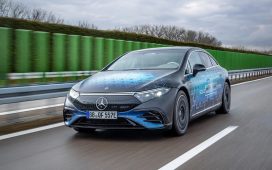(The Center Square) – Despite a hefty taxpayer price tag, several states are requiring cities to transition their public transportation to emitting zero greenhouse gasses.
Since 2022, seven states have passed laws to transition to zero-emission school buses.
In Illinois, a law passed last year requiring all transit agencies to purchase zero-emission buses by 2026. Similar legislation was passed in California, Connecticut, Delaware, Maine, Maryland and New York.
The Chicago Transit Authority reports that the transition will require an extra $1.8 to $3.1 billion taxpayer dollars in order to fund the transition, as opposed to diesel trucks.
In order to make that transition, cities will have to invest heavily in green infrastructure, like charging stations and batteries, or staffing electrical engineers.
“The operating savings from a fully electric fleet is expected to be offset by ongoing capital costs that are reduced compared to the transition period, but continue to be somewhat higher than diesel scenarios even after the transition is complete,” the CTA’s report said.
Put simply, post-transition will entail cost savings in daily operations, like lower fuel and maintenance costs. And once the transition is complete, these capital costs will decrease because the initial infrastructure investments have already been made, but will still be higher than a diesel fleet.
Annually, CTA estimates those capital costs to be $90 million greater than for a diesel fleet, attributed to “the added cost of replacing chargers and the projected higher costs to purchase and overhaul electric buses.”
“Electric buses can be cost competitive when their costs and benefits over their lifetime are considered but remain more expensive when only considering upfront costs, due to the cost of the batteries,” according to a report from C40 Cities Climate Leadership Group.
So consumers may see a short term increase in their electricity bill.
The CTA is aiming to have the transition complete for nine neighborhoods by 2040, with an average implementation rate of 4.77 years.
The CTA prioritized equity, ensuring that communities with lower incomes see the implementation first, with some garages already ready to support an electric fleet.
“As the power sector builds renewables and transmission and distribution capacity, the fully loaded unit cost of electricity production, accounting for operating costs, capital costs, and depreciation of new and existing assets, in this scenario could rise about 25 percent from 2020 until 2040 and still be about 20 percent higher in 2050 on average globally,” according to a report from McKinsey & Company, a global asset management firm out of Washington D.C.
To provide states with the required funding for rolling out the transition, the Federal Transit Administration and the Department of Energy offer a variety of grants and incentives.
Approximately $4.1 billion worth of federal grants have been made available through the FTA Low or No Emission Vehicle Program (Low-No), FTA Bus and Bus Facilities Program, and FHWA Congestion Management Air Quality (CMAQ) funds.
In a Pew Research Poll from February, “dealing with climate change” ranked as the 18th most important policy priority. Protecting the environment ranked 14th.
Since the coronavirus pandemic, inflation is up over 20%, according to an analysis from Bankrate.
CLICK HERE TO READ MORE FROM THE WASHINGTON EXAMINER
For all sectors, electricity rates are up 20.11% since 2020. For transportation, electricity rates are up 28%, the highest for all sectors. Residential rates are up 21.52% and commercial rates are up 20.30%.
Other cities in the middle of electrifying their public transportation include New York City, Seattle, Portland, Los Angeles, Philadelphia, San Francisco.










